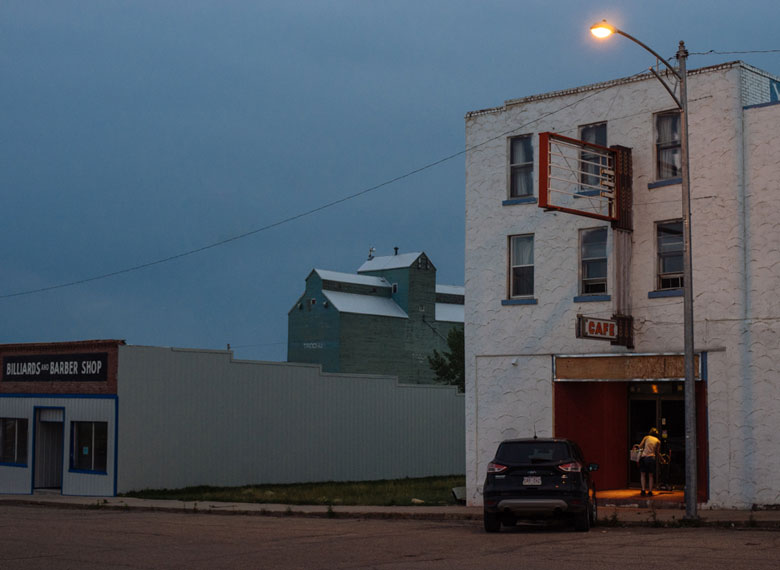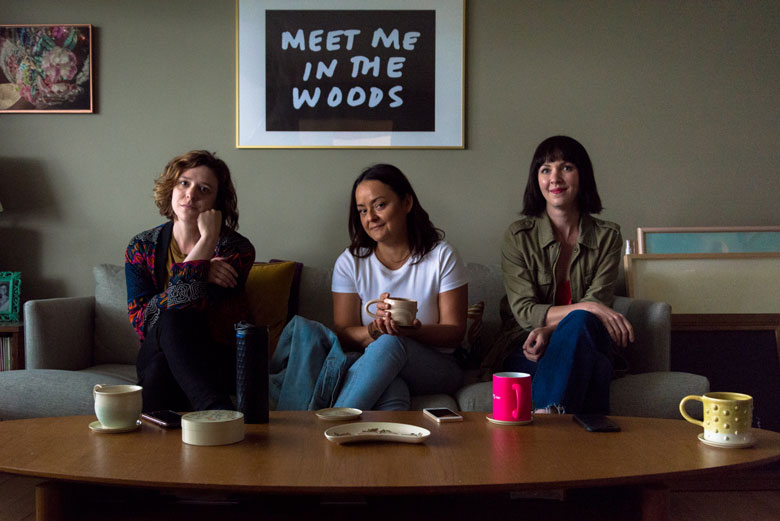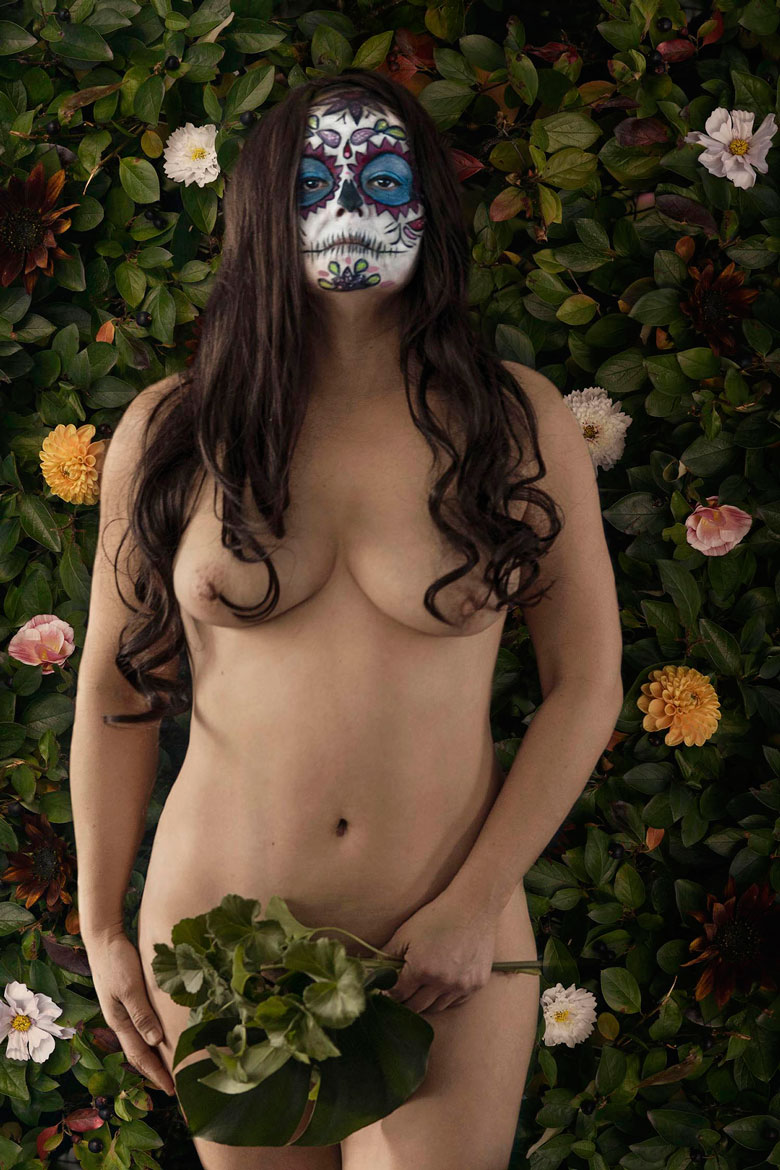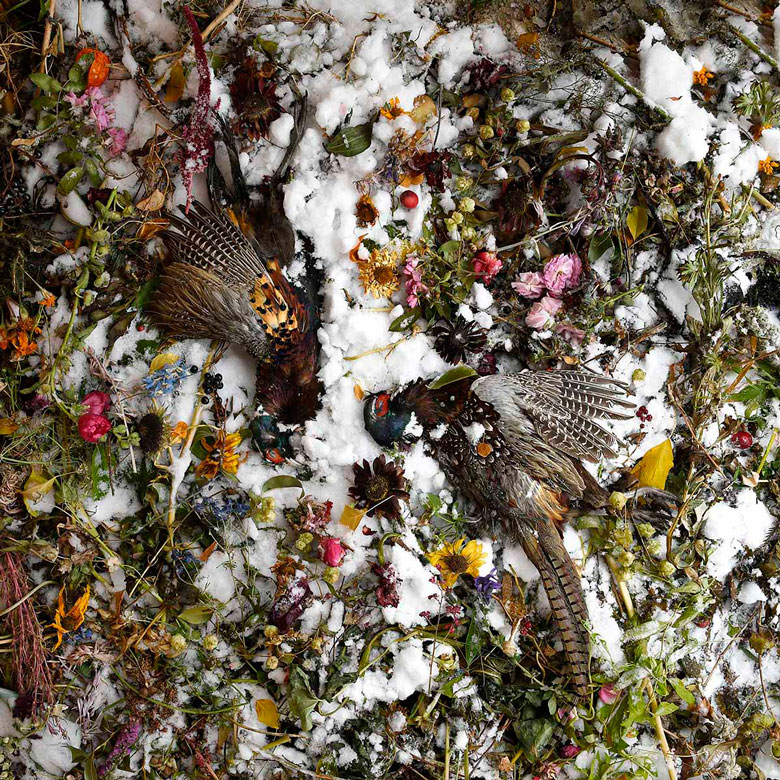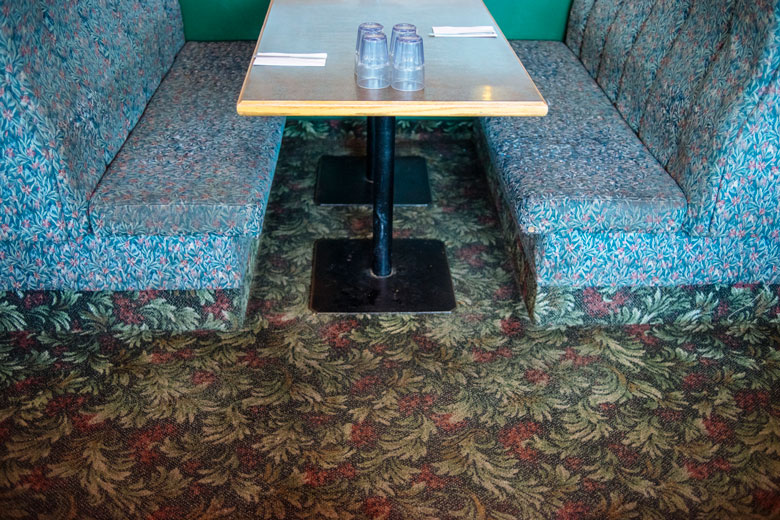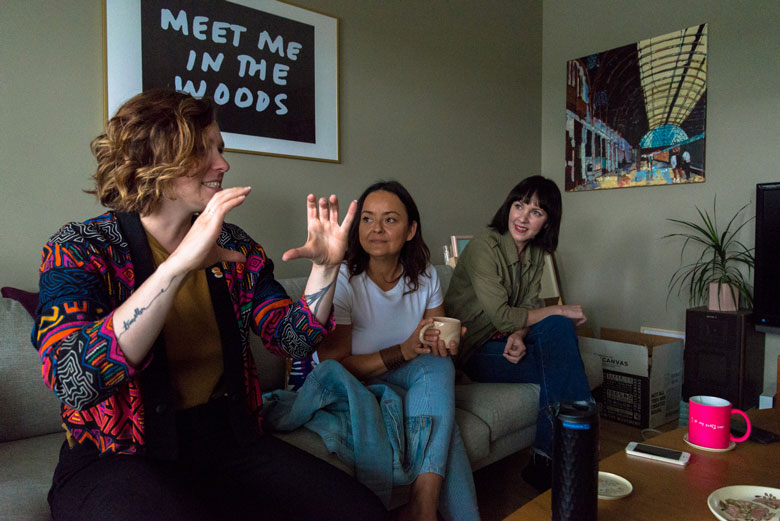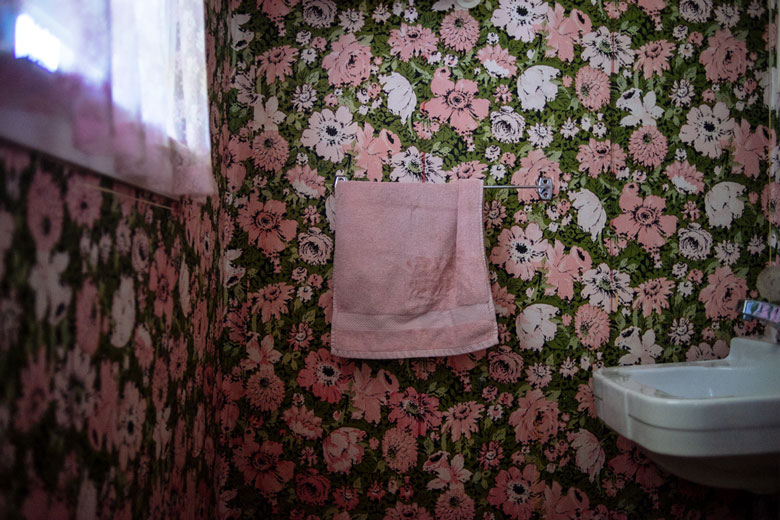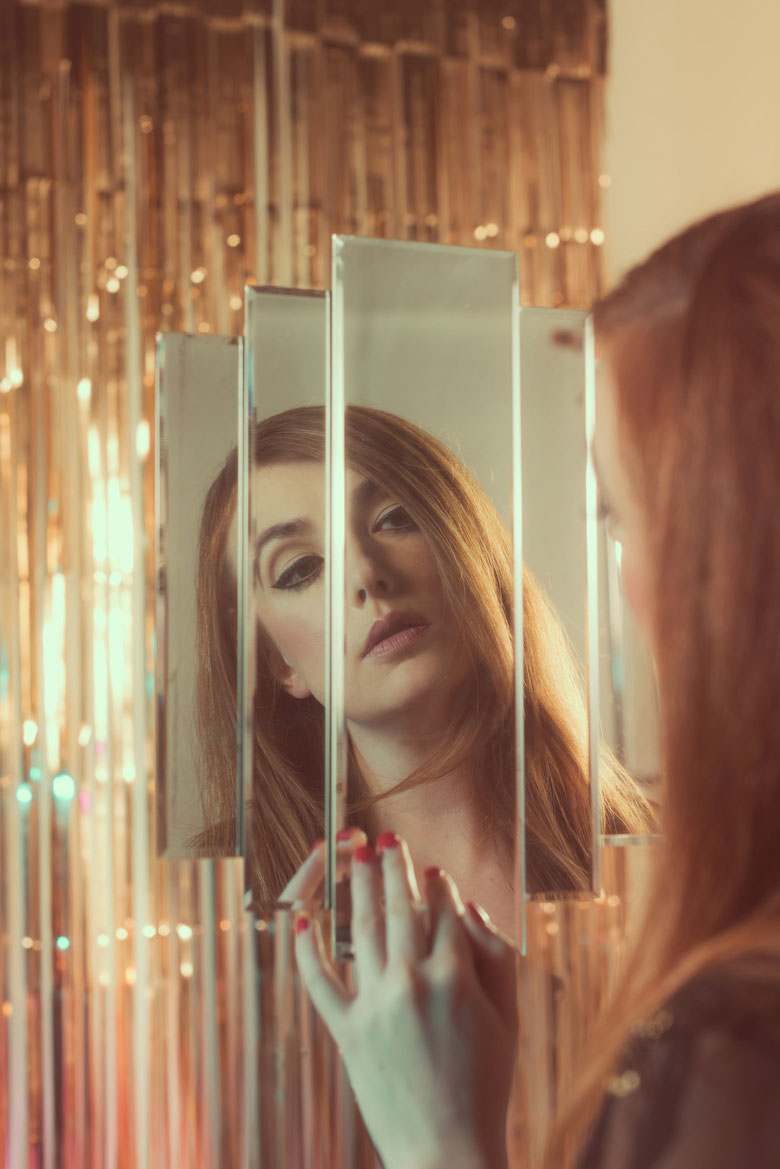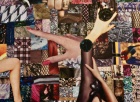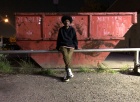On a Sunday afternoon I had shared a cup of tea with three amazing female photographers whom I greatly admire. It takes a lot of blood, sweat, and tears to succeed in the photography industry and each woman has rightfully earned their spot at the table. (Pictured below left to right) Elyse Bouvier, Rocio Graham, and Heather Saitz each work in variety of different mediums and styles under the umbrella of photography and no—they don’t care to share what gear they use. In this group interview we discuss the tribulations, tough lessons learned, and triumphs of working as a freelance photographer in Calgary.1
CHELSEA YANG-SMITH: How many years have you been doing photography? When did you decide to start taking on freelance work and what has that process been like so far?
HEATHER SAITZ: I graduated from art school in 1999 and worked in Toronto as a photographer’s assistant for awhile. I was freelance then and also worked in a restaurant. That was in 2000, and I’ve been going at it for 19 years—that’s insane. It’s been pretty consistent for me—I’ve always had my foot in some aspect or another in the photography world. I went back to school and got a degree in Communication Design for Advertising specifically... I was freelance 4 years ago and had my own company for a few years and then I went on to work in an advertising agency as their creative director and now I’m back to freelance again and it’s been almost a year. This is the first time I feel like I’m actually kicking ass at it in 19 years, I finally feel like okay, I can do this, this is my business, I’m saying no to work I don’t want to do—that’s a really good place to be in.
ROCIO GRAHAM: It’s interesting because I’m older than you but I’m newer to the freelance world and I guess for me it’s because it took me 10 years to finish my art degree (laughs). In terms of making money from photography it’s only been in the last four or five years. Even before I graduated from ACAD I started doing a lot of freelancing. I was actually doing fashion and corporate at the time—which pays really well but that isn’t my focus anymore.
ELYSE BOUVIER: I was always really interested in photography and was doing it through high school but I was like I’m not going to go to photo school—that’s dumb, that’s not a real career. I told myself that but then I got my first real big paid gig, which was a friend’s wedding, and they gave me $200 and that was in 2006. So I’ve been doing it professionally since 2006 and same as you Heather, having one foot in. I worked in the coffee industry for a really long time while also freelancing and I really enjoyed working in the coffee and service industry and it felt like these two careers worked together—until they didn’t. I also have a degree in Design and Communications so I’ve done more of that and have always done a little bit of communications work. It was really handy to have that to build my own business.
I have a different story where I came into the art side through photography. I started as a photographer and then found my way into art. I didn’t have formal training in art, but I did some classes in university. When I went back and did my MFA that was a really big game changer for me in understanding my work as a practice—that really shifted things for me. I moved back from Toronto and that was when I started fully freelancing and did that for two and a half years and ended up picking up more work with Folk Festival and I’ve been really appreciating having a day job at this point in my life. The freelancing thing was cool to be like I can do this but the stress was really getting to me.
CYG: How do you measure your success as a photographer?
EB: A few years ago I really sat down and I imagined what my ideal lifestyle would be and it’s working less and doing more things that I enjoy so I can feed my creativity. I really believe in the idea that for a small nugget of creativity you need this bubble of space. My goal is to live a sustainable life, both in my creativity and finances. That to me is going to be success.
HS: Artists are typically not motivated by money, I’m motivated to make a living and to be comfortable. My target of success changes, it’s constantly fluid and I find that I have little goals that I reach. No good work is ever produced alone, you know what I mean? That’s sort of my motto but I need people to help me. When you find those people to work with you in a creative manner, people that you collaborate really, really well with. Holy shit, don’t ever let them go!
RG: I am at a place where I don’t measure my success by the income I make or the reputation of projects. I measure success by the freedoms I have to live a life that fulfills me and allows me to connect deeply to people and engage in projects that I’m passionate about. You have to surround yourself with people who believe in what you do, who trust you, and who are excited for the same things that you are. These are your people, they are people who will support you, who will inspire you. These are people who help you make better and bigger things because together you will create these opportunities. I didn’t sit and wait, I told myself I’m going to create this opportunity for me. It’s kinda how one thing rolls to another and all the amazing stuff that I’m doing right now—those are seeds that I planted years ago.
CYG: Photography, at least in Calgary, is a fairly male-dominated industry. What has it been like to navigate through these spaces as a woman?
EB: The one biggest thing that’s affected me as a female photographer is I don’t go after things the same way that my male photographer friends do and they get certain opportunities because they do that. I’m a really confident person and I go after a lot of opportunities but sometimes I just don’t push enough. There’s even photographers I know in Calgary who started only a few years ago who are now doing huge campaigns and it’s like “What am I doing different?” I always remember that quote that men will apply for a job they are 75% qualified for and women won’t unless their over 100% qualified for [it]. I think about that in terms of my photography a lot and I try to shift that thinking. I’ve definitely written off certain types of photography because they are so male dominated.
RG: For me it was difficult when I was doing commercial photography. I found when I would hire a male assistant, somehow people would assume he was the photographer and I was the assistant. Or I would be in photoshoots where I’m calling the shots and then the assistant is telling me “Maybe we should do it like this or like that.” After awhile I just stopped having assistants, because you know what? I know how to do it and I can do it by myself.
EB: I definitely find the technical portion of photography is very male-dominated. I’ve worked events and have had men approach me and ask what kind of gear do you have? I would never ask someone that. I would ask “What kind of photos do you use, what are you interests?” The gear is the least interesting thing about our photography.
RG: The funny thing is like you go to somebody’s house for dinner and you get an amazing cake, you don’t ask them what kind of pan did they you use? What’s the brand of pans or mixers you used? You enjoy the damn cake, period!
HS: That would never be the first question out of my mouth when I meet someone and I don’t even know what kind of work they shoot—"Oh, what kind of gear do you have?” It seems so weird.
CYG: Are there any factors (financial, age, gender, education, etc.) that help someone become a good photographer?
EB: The idea that you can’t be a real photographer unless you have some gear or you shoot on film, doesn’t make sense to me. Some of the best photographers coming up, these young really cool artists, are shooting with their phones. All the power to them! That’s turning the industry a little bit on its head and that’s okay. I don’t think that’s a bad thing that we have more photography, that photography has become a communication tool. The level has risen, if you want to be a good photographer, and you want to make it in the industry you have to rise above that. It just means there’s more literacy for good photographs.
RG: I find at the end of the day, whatever you’re shooting with, the reality is that the images that are most successful are the images that continue to evoke emotion and tell stories in a rich visual way. Those are the images that people gravitate to. A good image has nothing to do with the gear or the medium, it has more to do with its ability to engage with the viewer.
EB: My camera is a tool to communicate something. It’s the same way a painter may use watercolours to paint one thing and oils for another. No one looks at a painter and thinks that’s not real painting because it was done this way instead of that way. I just think there’s something so specific to photography about the expectations on the gear that you have to have.
HS: One of the ways that you learn as a photographer and train your eye is by doing it right and shooting all the time. Whether you’re doing that with a phone or a little film camera you’re carrying around, you’re learning. I think the iPhone has been a great tool for that. You’re able to always be constantly shooting.
CYG: People often glamorize working as a freelancer: you get to pick your own hours, work from home, be your own boss, etc. I know that isn’t always the case but let’s speak a bit on that, what’s an average work week look like? Do you have any advice for emerging photographers looking to break into the industry?
HS: It takes a certain person, maybe that doesn’t sound right... It takes a certain mindset! It’s so funny something as simple as going to the mailbox now, is such a monumental or degrading experience for me. Is there a cheque? (disappointed sigh) It’s just waiting and waiting and waiting and waiting to get paid. It totally fucks with your psyche!
EB: Oh yeah, even chasing down cheques still. When I worked with some of the bigger organizations especially—they take months to pay you and you’re checking your mailbox constantly and you’re like when is it going to come, when am I going to get paid for that job three months ago? I needed the money three months ago and now you have to plan ahead.
HS: My big thing right now is the people who work for me, I have retouchers, assistants—I think it’s really beneficial when someone is working as a contractor, that they shouldn’t have to wait to get paid. That’s something that’s really nice if you’re going to work for me, I’m going to make sure you’re getting paid in a reasonable timeline. For me I just went out and got a massive line of credit and have that filtered through my business.
RG: That’s pretty smart! But it must have taken you time for you to figure it all out.
HS: When I was doing this four years ago, this is the second time I’ve been doing freelance as a photographer, I had no fucking clue. I was in debt, I was charging for nothing. I was basically giving my work away for free. I didn’t think that I could charge for my work.
RG: I think a lot of women have that insecurity because we always feel we aren’t good enough. I don’t want to generalize but when you first start out in a creative career you’re always wondering “Oh, am I charging too much?”
...maybe you’re always working part time somewhere else and part time freelancing and that’s also okay. You don’t have to have this goal of reaching that full time freelance level, it’s not a level up. Sometimes it works for people, sometimes it doesn’t, do what’s best for your practice.
HS: I still struggle with that but I think one of the most important things as a business person and as a photographer— you need to be charging for your eye, you need to be charging for your creativity. If you’re coming to me because you love my work, you’re going to be paying for that as well as that creativity.
RG: Charge for your fucking work, do not do work for free—unless it’s something you really believe in or is a company or organization that will provide you with a certain level of exposure. You have to get something back! Like what Elyse said earlier is so important, you need to let them know what the value of your services are and that there is clear communication that this is not your normal rate.
EB: Even just so that they understand if they ever refer you to someone, that the next person doesn’t expect they’re going to get this cheap ass rate.
HS: I’ve set a lot of boundaries in my business and I’ve grown a much thicker skin. I’m not as worried now about turning jobs away because once you do you make space for something else to come in. I don’t want to do work anymore that’s just for money. It can’t happen right away otherwise you’re turning away work and you’re going to end up broke but eventually over time it’s really important to set those boundaries.
EB: Yeah and to have that goal where you can reach that place where you don’t have to do this kind of job OR the other thing, it’s not a bad thing—when you’re emerging, to have that second job. You can set a little bit of boundaries as your practice grows, which helps a lot and can help save your mental health. And maybe that’s all you ever have, maybe you’re always working part time somewhere else and part time freelancing and that’s also okay. You don’t have to have this goal of reaching that full time freelance level, it’s not a level up. Sometimes it works for people, sometimes it doesn’t, do what’s best for your practice.
CYG: Okay, last question—everyone here has lived in different cities at some point but now live in Calgary. Why Calgary?
EB: When I moved to Toronto for my MFA in Documentary, I was like I’m going to move all my shit and I’m going to do my Masters and stay and make it work in Toronto. After I graduated—I got out of there so fast. The thing for me is I did get into the community a little bit because of school, but the community over there is so segregated. Documentary photographers over here only, modern painters over there. It’s very separated by style and other things and what I love about Calgary is that it’s much more interdisciplinary in the arts community. For example, some of my closest friends are working in installation and other mediums. I am creatively inspired, as a photographer, by other forms of art and being a part of that community. Toronto in general, just in terms of vibes even in the art community, I call it the city of try-hards. Everyone just is trying really hard to be something or to be really cool or be this or be that and there’s a way more laid back vibe about Calgary that I think is really to your advantage as an artist to explore your creativity and have a little bit more freedom. I felt really boxed in and to have a certain style to make it in Toronto and I didn’t find my work fit that.
HS: I think Calgary can act as a really good home base that you’ve got everything you need here. It’s got a good quality of life, it’s clean, it’s safe, there’s a wicked little community of creative people that are also intertwined. It’s much more affordable. It’s got a great support system here. I think the trick is you use that to your advantage and the extra money you’re saving from rent you use to branch out and try and get your work seen. Especially in the past few years it’s grown on an international level and people are starting to take notice. I think that’s how I look at Calgary now and I don’t feel like I need to apologize for not living in a bigger urban centre.
I find at the end of the day, whatever you’re shooting with, the reality is that the images that are most successful are the images that continue to evoke emotion and tell stories in a rich visual way...A good image has nothing to do with the gear or the medium, it has more to do with its ability to engage with the viewer.
RG: I completely agree that it’s a good place to have a home base. I lived in Vancouver for 11 years and I was involved in the community there and one of things I noticed about Calgary, and I have always said that, is that Calgary is like an eager teenager in the sense that it’s an open city. It’s open to new ideas and new visions. I agree with both of you that because it’s so multi- disciplinary and because it’s a smaller city, you get this mix of creative people that are writers, and designers, and painters, and photographers, and we all hang out with each other. Because of that it creates very unique opportunities—I find here if you have an idea, the community rallies to support you.
HS: As a creative person, as an artist that community is one of your strongest assets. Calgary excels at that, we’re kind of known for that...’Pal-gary’ that’s why I think it’s so great here.
RG: That’s something I absolutely love that I can collaborate with people outside of photography and I get inspired by them. I feel so fed by that diversity because it’s a smaller playground. I feel like a lot of awesome opportunities have come my way because of that. If it was a bigger city like Vancouver, it would be segregated and have this boys club embedded in the scene. As a woman photographer it’s way harder to make it in Vancouver. Opportunities I see here that people get, they would never get in Vancouver. There’s just some likeness about it that I really like.
Chelsea Yang-Smith | @chelseayangsmith | chelseayangsmith.com
Chelsea Yang-Smith is a visual artist currently based in Calgary, Alberta. Using digital and analogue photography, she merges emotional intimacy with process through monumental banners depicting the Albertan landscape embedded with ‘sad girl text art’. Her current research investigates the parallels between marginalization, emotional vulnerability, and navigating the socio-political dichotomy of being a passing woman of colour.
Yang-Smith holds a Bachelor of Design in Photography from the Alberta University of the Arts (2016) and is a former Photography Practicum of the Banff Centre for Arts + Creativity (2017). She has participated in several solo and select group exhibitions in Calgary, such as second- sight at Marion Nicoll Gallery, and these objects that I have unearthed from the bottom of my drawer at Arts Commons and POST-WAVE at Stride Gallery. Currently, she works as a freelance photographer, notably shooting for clients such as The Illingworth Kerr Gallery, Quickdraw Animation Society, Beltline Neighbourhood Association, and Kino Sum Productions.
Rocio Graham | @rociograham | rociograhamstudio.com
Rocio Graham calls Calgary home. She emigrated to Canada from Mexico in 2002. She studied art at Emily Carr University and at the Alberta University of the Arts where she obtained a Bachelor of Design in Photography in 2017.
She explores the landscape from a body engagement perspective, where labour, mysticism, science and temporality merge. Rocio co-founded Blind Spot, an annual photo-based art exhibition during Exposure Festival. She is currently a peer residency coordinator for the AUArts Hear/d art residency, a freelance photographer, and Board Director for the Elephant Artist Relief Society. She strives to build community; a commitment that is exemplified by the garden studio and art installation that she has recently created at the Women’s Centre of Calgary. Rocio is represented by Christine Klassen Gallery.
Elyse Bouvier | @elysebouvier | elysebouvier.com
Elyse Bouvier is a Western-Canadian artist based in Calgary with an MFA in Documentary Media from Ryerson University (2016) and a Bachelor of Communication from Mount Royal University (2010). Her practice explores ideas around Albertan and Canadian identity, particularly through the lens of food culture, such as her project Royal Cafe: Chinese-Western in Alberta. Recently, she launched Independent Study, a popup art bookstore that seeks to foster a culture of art books in the city. When not participating in the active art community in Calgary, she can be found exploring rural roads in her ’91 Volvo.
Heather Saitz | @heathersaitz | heathersaitz.com
For over 15 years, Heather Saitz has been merging her skills as an award-winning photographer and art director to create compelling visual work, rich in cultural context and character. Her fine art practice draws inspiration from theories of cultural ecology, an often involves travelling to offbeat locales with a medium-format rangefinder camera in search of subjects with cultural and historical pertinence. In her commercial practice, Heather has shot ad campaigns for a multitude of fashion and lifestyle clients across Canada and has contributed to many editorial publications including The Calgary Herald, Westjet Magazine, The Ryerson Review of Journalism, Quill & Quire, and more. Born and raised in Ontario, Heather studied Photography at Sheridan College and Communications Design at Seneca @ York before arriving in Calgary, Alberta—her current home base.

